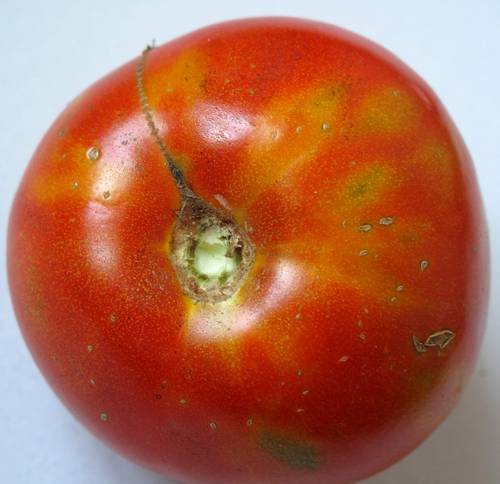
FAQ About Indoor Plant Viruses and Their Management

What are common signs that an indoor plant might have a virus?
Common signs of a virus infection in indoor plants include yellowing or mosaic patterns on leaves, stunted growth, deformed leaves or flowers, and overall poor plant health. These symptoms can vary by the type of virus and plant species. If a plant shows unusual symptoms, it may be advisable to compare them with known viral infection symptoms in similar plants.

How do viruses spread among indoor plants?
Viruses in indoor plants can spread through several mechanisms. The most common route is via infected tools or hands when pruning or handling plants. Viruses can also be transmitted by insect vectors such as aphids and whiteflies, which carry the virus from one plant to another. Additionally, the use of contaminated potting soil or introduction of new, infected plants can facilitate viral spread.

Can indoor plant viruses be treated chemically?
Currently, there are no chemical treatments available to cure viral infections in plants. Management focuses on prevention, such as maintaining good hygiene by sterilizing tools and hands, controlling insect populations that may act as vectors, and removing infected plants to prevent further spread.

What are some effective strategies to prevent virus infection in indoor plants?
Preventative strategies include ensuring proper sanitation by cleaning tools and washing hands before handling plants, avoiding the reuse of soil, quarantining new plants before introducing them to your space, and controlling insect vectors that could spread viruses. Regular monitoring of plant health is also vital in early detection and prevention.

Is it possible to save an indoor plant once it's infected with a virus?
Once a plant is infected with a virus, it is usually not possible to cure it. The best course of action is often to remove and dispose of the infected plant carefully to prevent the virus from spreading to healthy plants. It's essential to confirm that viral infection is the issue, as some symptoms might mimic nutrient deficiencies or other problems.

How can I identify which virus is affecting my indoor plants?
Accurate identification of a plant virus often requires laboratory testing, as symptoms can be similar between different viruses and even other plant issues. Some universities or extension services offer diagnostic services for plant viruses. Observing specific symptoms, the plant species affected, and researching common viruses associated with those plants can also provide clues.

What are some common viruses that affect indoor plants?
Common viruses that can affect indoor plants include the Tobacco Mosaic Virus, Cucumber Mosaic Virus, Tomato Spotted Wilt Virus, and plant-specific viruses such as the Orchid Mosaic Virus. These viruses can cause a range of symptoms including mottling, leaf curling, and growth distortions.

How do I dispose of an indoor plant that is infected with a virus?
Infected plants should be removed and disposed of in a way that prevents the spread of the virus. Do not compost infected plants; instead, seal them in plastic bags and dispose of them in the trash. Clean any tools or pots that came into contact with the plant with a bleach solution to kill any remaining viruses.

Can certain indoor plants be more resistant to viruses?
Yes, some plants may have natural resistance to certain viral infections due to genetics. Additionally, plant breeders work on developing virus-resistant varieties, so choosing resistant varieties when available can reduce the risk of viral infections in your indoor garden.

Why do my indoor plants suddenly develop mottled leaves?
Mottled leaves can be a symptom of several issues, including viral infections. Viruses like the Cucumber Mosaic Virus can cause mottled patterns on leaves which interrupt the normal function of the leaves, leading to reduced health. Other possible causes include nutrient deficiencies or damage from pests, so it's important to investigate all possible causes.

What role do insects play in spreading plant viruses indoors?
Insects like aphids, thrips, and whiteflies play a critical role in spreading plant viruses. These insects feed on the sap of plants and can carry viruses from one plant to another during feeding. Effective insect control measures, such as insecticidal soaps or natural predators, can help minimize the risk of viral transmission indoors.

How can I prevent the spread of viruses when propagating plants?
To prevent virus spread during propagation, always use sterilized tools and ensure your hands are clean. It's also crucial to only propagate from healthy plants, avoiding material from any plants that show potential viral symptoms. Using sterile potting mix and clean containers can further reduce the risk of spreading infection.

Can environmental conditions affect the severity of plant virus symptoms?
Yes, environmental conditions such as temperature, humidity, and light intensity can influence the severity of virus symptoms in plants. Stressful conditions can exacerbate symptoms and speed up the spread of the virus within the plant. Providing optimal growing conditions might not cure the virus but can help the plant tolerate the infection better.

How often should I monitor my indoor plants for signs of viruses?
Regular monitoring is crucial for early detection of viral infections. Checking your indoor plants weekly for any changes or unusual symptoms can catch potential issues before they become widespread. Look for changes in leaf pattern, color, or overall plant vigor.

Do viral infections in plants pose any risk to humans?
No, plant viruses do not pose a risk to human health. The viruses that affect plants are specific to plant hosts and cannot infect humans or animals. However, they can still have a significant impact on your indoor garden's health and aesthetics.

Can infected indoor plant soil spread the virus to other plants?
Yes, viruses can survive in dead plant material and potentially in the soil. Disinfecting or discarding soil that has been in contact with an infected plant is recommended. Using fresh, sterile potting mix and thoroughly cleaning containers can help prevent the spread of plant viruses.

What are the consequences of ignoring a viral infection in an indoor plant?
Ignoring a viral infection in an indoor plant can lead to the virus spreading to other plants, potentially causing widespread damage to your indoor garden. Infected plants often exhibit reduced growth, poor appearance, and can die over time. Controlling the spread early is critical to maintaining the overall health of your plant collection.

Can cleaning products be used to sanitize tools and areas affected by plant viruses?
Yes, using a bleach solution (1 part bleach to 9 parts water) is effective in sanitizing tools and surfaces that have come into contact with infected plants. It's important to soak tools thoroughly and rinse them well after disinfection to prevent damage to your plants when reusing the tools.

Is there genetic engineering involved in creating virus-resistant indoor plants?
Yes, genetic engineering is one of the techniques used to create virus-resistant plants. Through genetic modification, specific resistance traits can be incorporated into plants to protect against certain types of viruses. Such plants can be an effective strategy in reducing the impact of viral infections.

How does rotating plant locations help in managing plant viruses?
Rotating plant locations as a strategy is more applicable in outdoor agricultural settings to prevent soil-borne diseases but can inadvertently reduce pest populations indoors if insects carry viruses. Changing plants' locations might disrupt insect breeding cycles, thus reducing viral spread. However, rotation alone is insufficient for managing indoor plant viruses.
